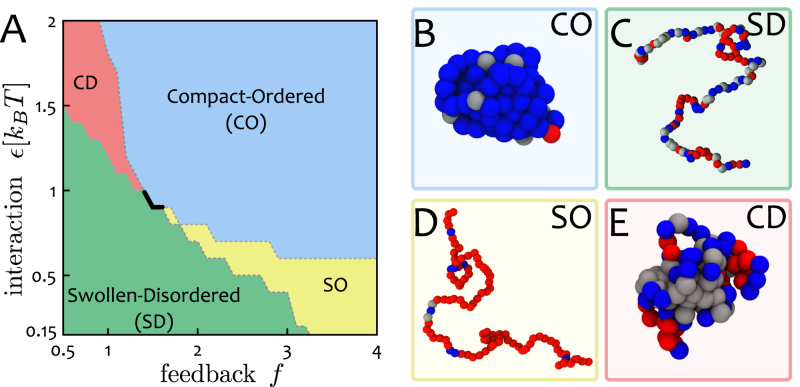Figure 2.
Phase Diagram: Chromatin states and epigenetic memory. (A) The phase diagram of the system in the space (ϵ, f ≡ α/(1 − α)) displays four distinct regions: (i) swollen-disordered (SD); (ii) compact-ordered (CO); (iii) swollen-ordered (SO) and (iv) compact-disordered (CD). The thick solid line represents a first-order transition between the SD and CO phases, whereas the dashed lines signal smoother transitions between the regions. (B–E) Representative snapshots of the stable states, which resemble conformations of chromatin seen in vivo. The CO phase may be associated to globally-repressed heterochromatin, the SO phase to open transcriptionally-active euchromatin, and the the CD phase to ‘gene deserts’ characterised by low signal of PTMs and collapsed 3D conformations (28,29,60,61). The first-order nature of the SD-CO transition entails ‘epigenetic memory’ (8), and the CO phase is robust against extensive perturbations such as the ones occurring during replication (46).

